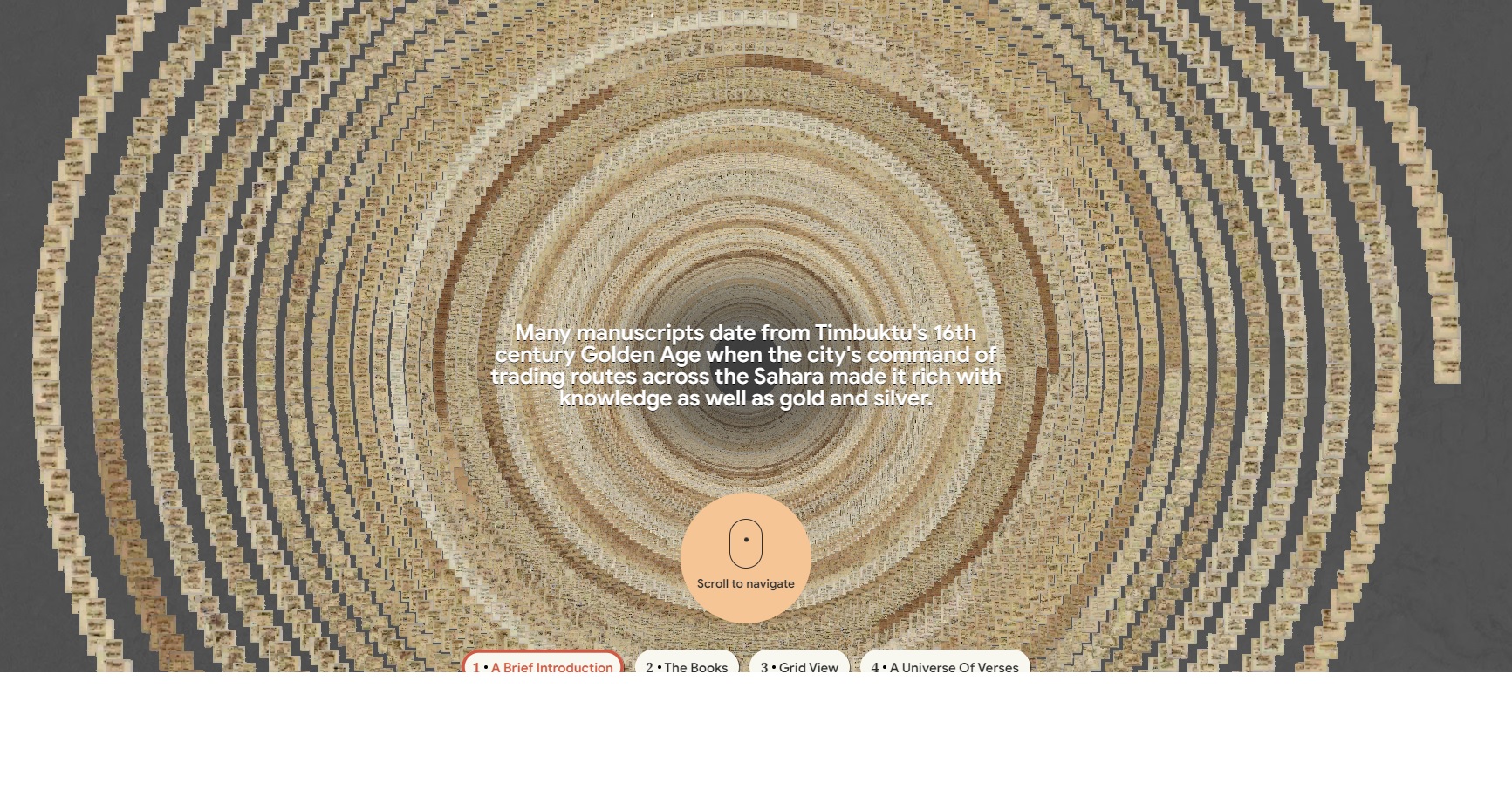
One of the largest literary productions in Africa has been digitized and is in Google Arts & Culture. It is called Mali Magic and includes more than 40,000 pages of the manuscripts of Timbuktu, a city that is located seven kilometers from the Niger River, in the Republic of Mali.
In collaboration with historians from West Africa, Google was working on the digitization of part of Mali's cultural heritage. After intensive work, this innovative digital project was recently launched, open to the public. To explore it, just enter here.
There are texts from the 11th to the 20th century that cover various topics, including astronomy, law and medicine. This is the work preserved by librarian Abdel Kader Haidara, who is known for the work he did in 2012 when he saved these important literary works of the jihadists who had occupied Timbuktu at that time.
The occupants began to destroy historic sites in the city, and Haidara realized that the manuscripts were in great danger. This is how he formed a help network, made up of local and international organizations, and they began to collect the texts so that they could be transferred to a safe place.
It should be noted that they are ancient writings printed in some cases on goatskin, sheepskin and even fish. The fruit of that silent and courageous work, which took him about 18 months, can be seen today reflected in an impressive virtual exhibition.

“The digitized collection and experiment, which shows a large archive of manuscripts available from Google Arts & Culture, opens a whole new door to understanding the past and cultural significance of archives. Documents representing a Renaissance in African history, previously thought to be spoken but never written, are now accessible to the public and modern scholars around the world,” explains Haidara, on the site's official blog.
These manuscripts, which deal with topics as diverse as strategies for keeping peace, astronomy, mathematics, divination and advice of all kinds, were secretly taken out of the city by cars and boats. Some are written in verse to help memorize the content. You can find texts that talk about slavery, the rights of married women as well as tolerance between religions.

Timbuktu was a key trading post on the route that caravans made through the Sahara during medieval times. Hence, it has been a city where many texts of various kinds emerged and therefore serves as a window to education, religion, commerce and many other aspects of the culture of that region.
Many of the digitized texts date from the time known as Timbuktu's golden age, the 16th century, when the city not only prospered economically, but also intellectually. In that century, its university was in full swing and had, according to various estimates, about 25,000 students, equivalent to a quarter of the city's population.
“The progressive interpretation of Islam in Timbuktu allowed for friendships between men and women and a love of music and dance that generated an intellectual environment where, according to Joshua Hammer in his work The Book Smugglers, it was possible to create manuscripts with titles like this: Advice for Men on sexual relations with their wives”, is detailed on the Google site.
In the manuscripts you can even find recipes for making aphrodisiacs that aim to improve fertility, as well as recommendations from the best verses of the Quran to achieve more intense and prolonged orgasms.
KEEP READING:
Últimas Noticias
Debanhi Escobar: they secured the motel where she was found lifeless in a cistern
Members of the Specialized Prosecutor's Office in Nuevo León secured the Nueva Castilla Motel as part of the investigations into the case

The oldest person in the world died at the age of 119
Kane Tanaka lived in Japan. She was born six months earlier than George Orwell, the same year that the Wright brothers first flew, and Marie Curie became the first woman to win a Nobel Prize

Macabre find in CDMX: they left a body bagged and tied in a taxi
The body was left in the back seats of the car. It was covered with black bags and tied with industrial tape
The eagles of America will face Manchester City in a duel of legends. Here are the details
The top Mexican football champion will play a match with Pep Guardiola's squad in the Lone Star Cup

Why is it good to bring dogs out to know the world when they are puppies
A so-called protection against the spread of diseases threatens the integral development of dogs




